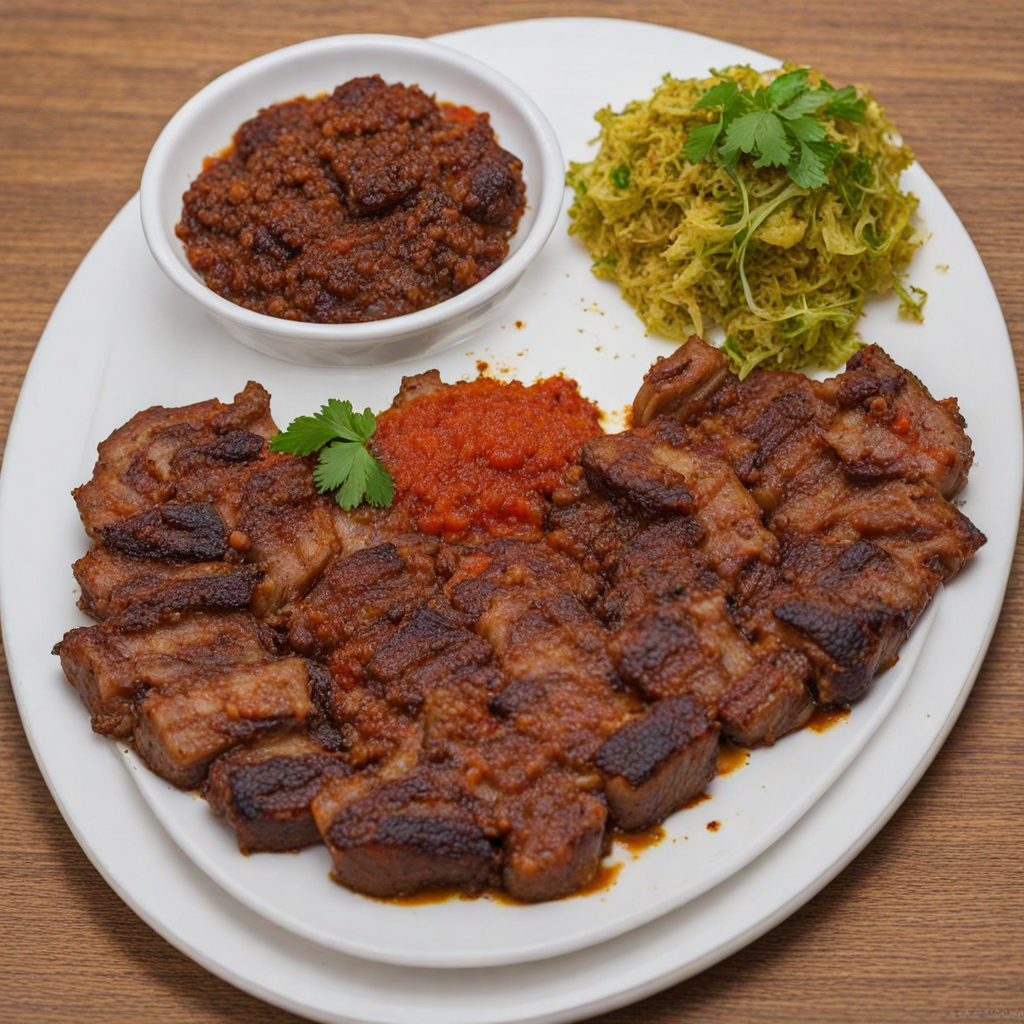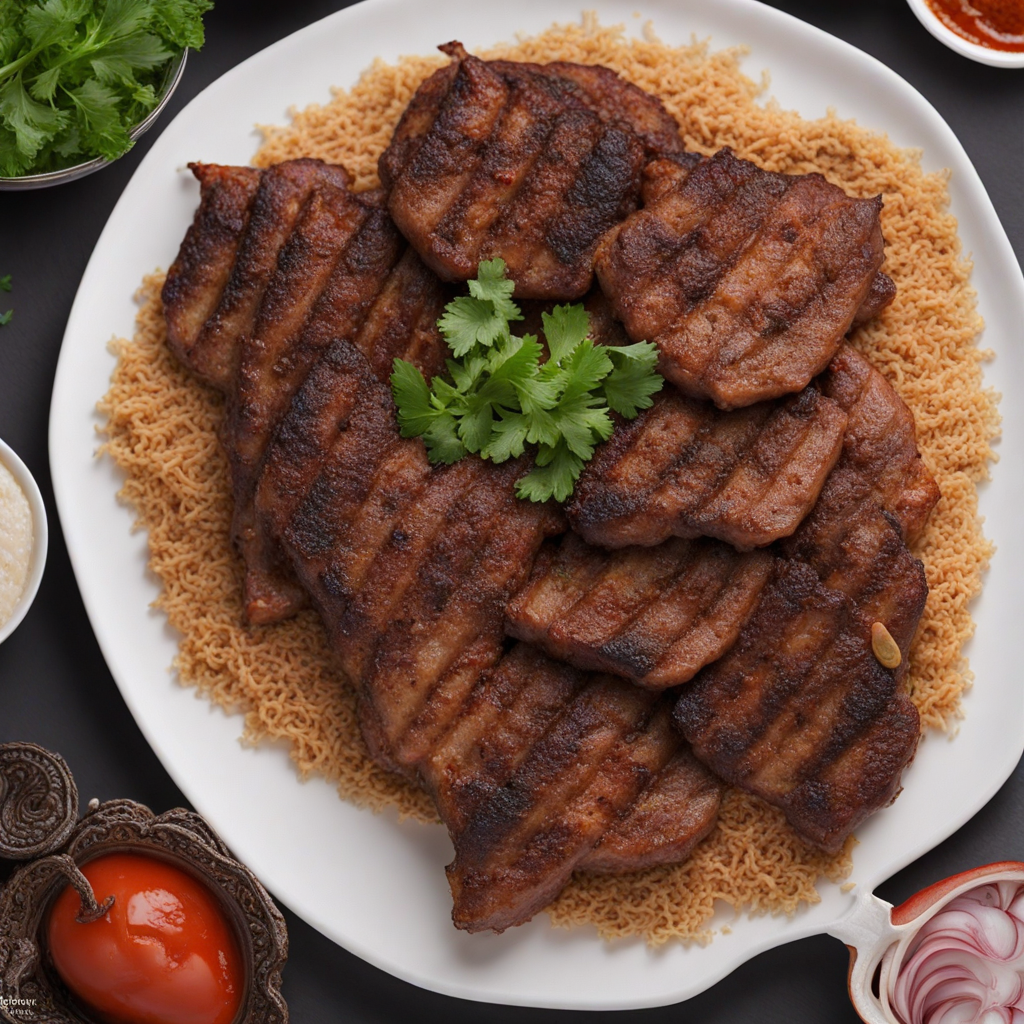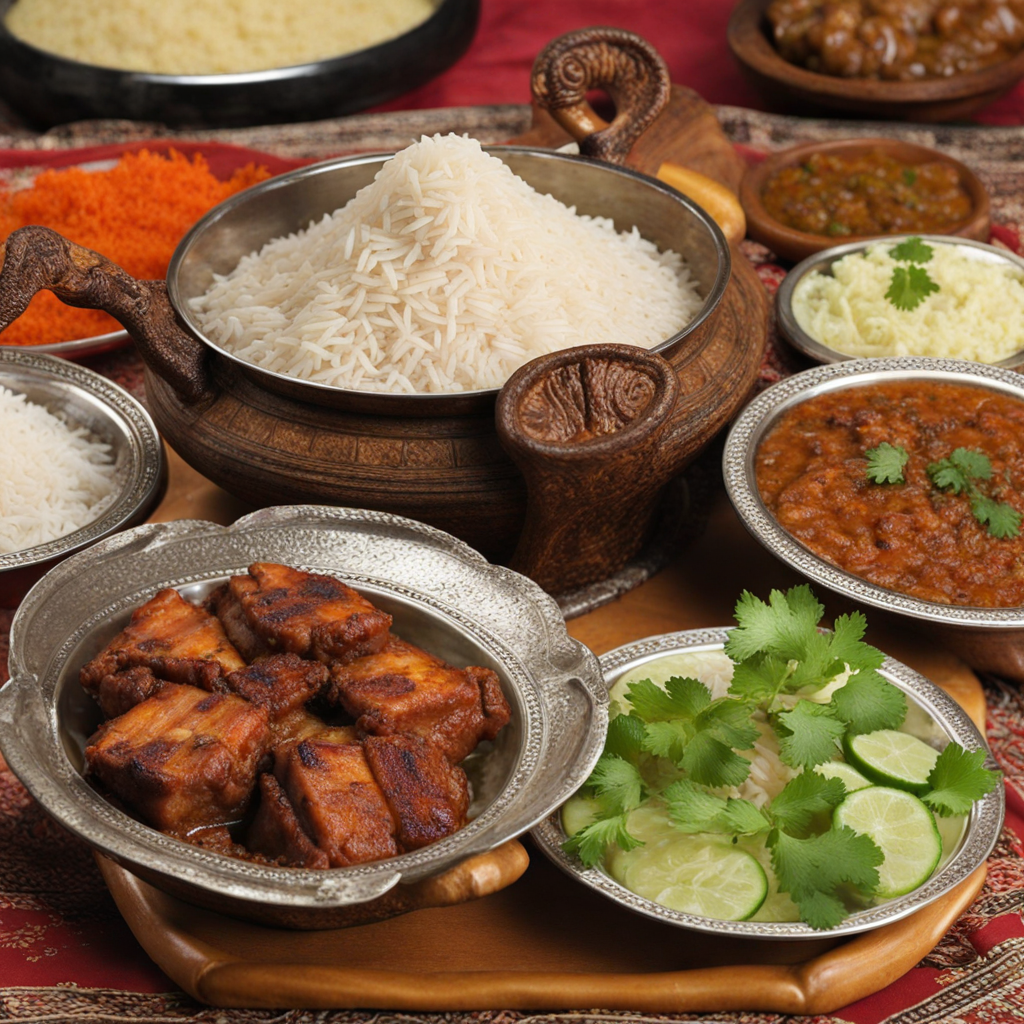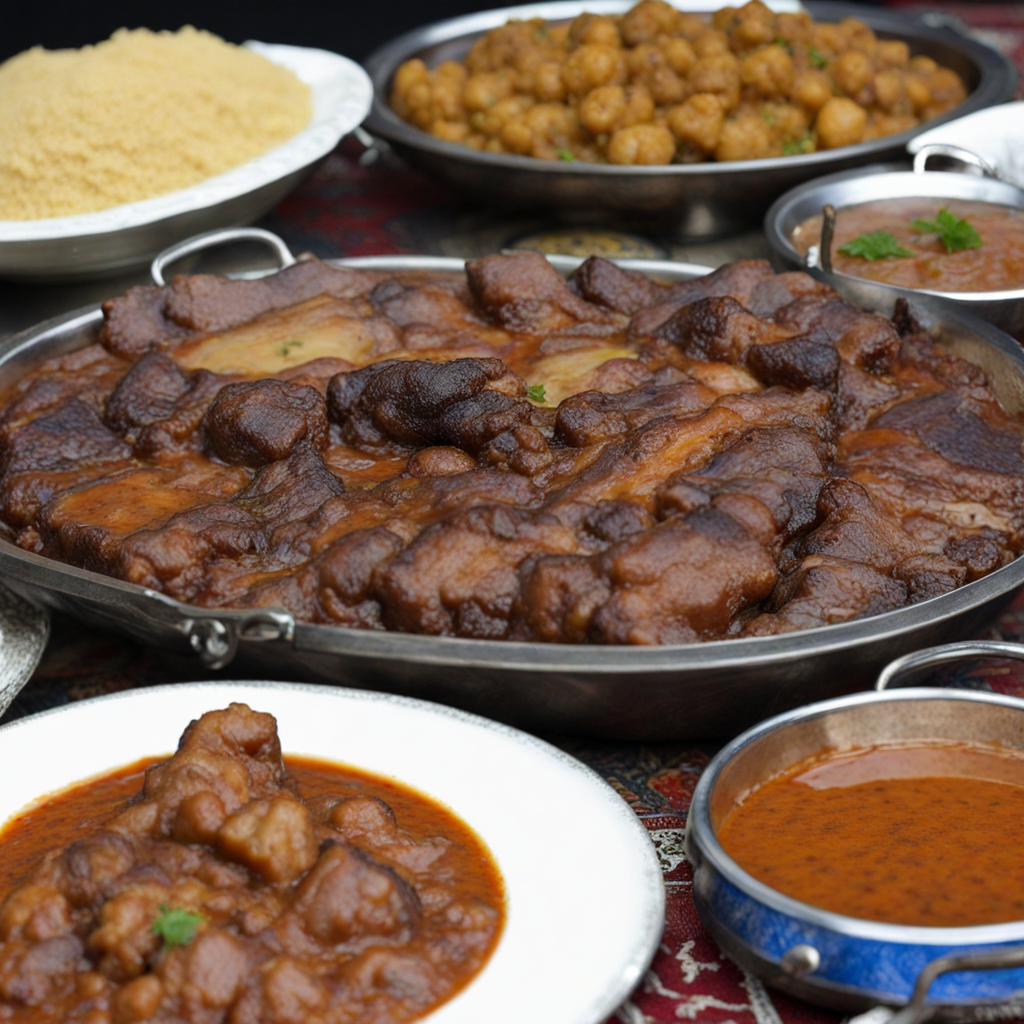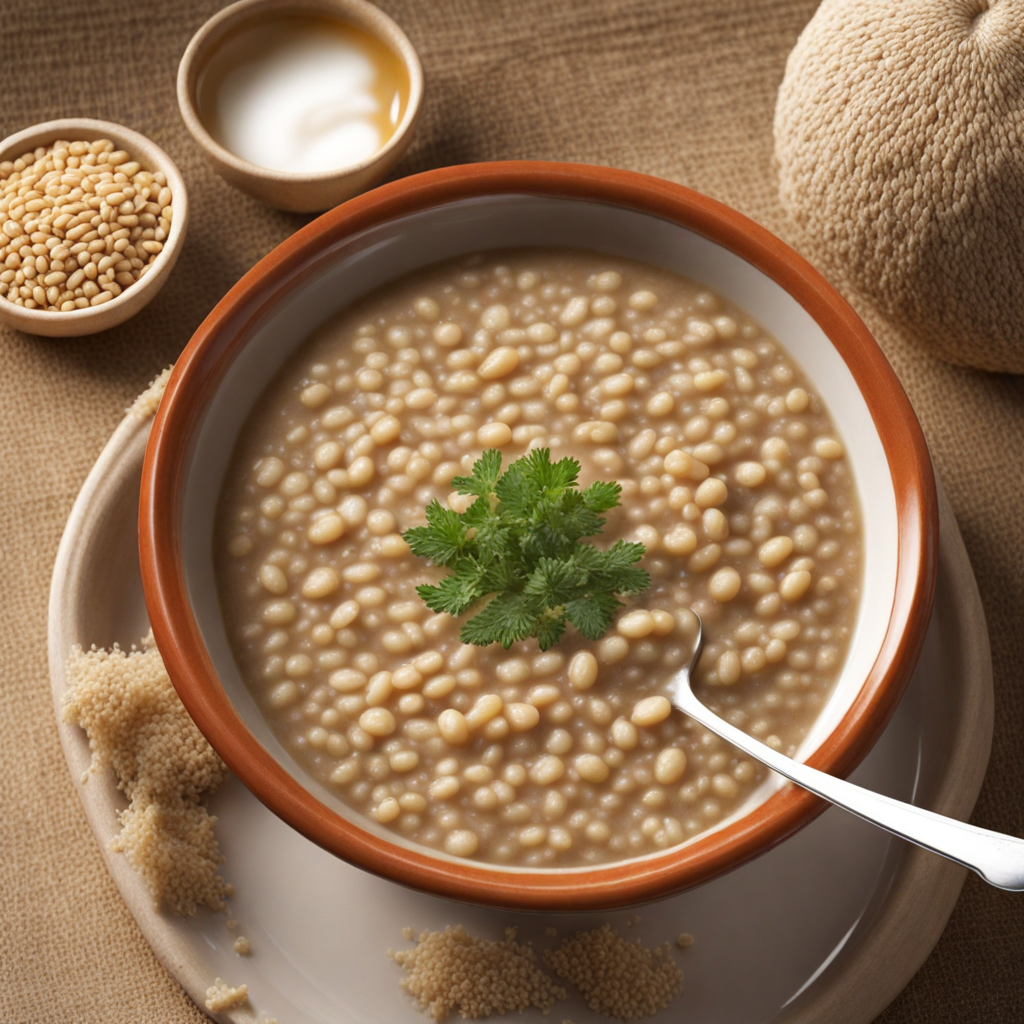Mashwi
Mashwi is a traditional Yemeni dish that tantalizes the taste buds with its robust flavors and aromatic spices. This dish typically features marinated pieces of meat, often lamb or chicken, that are generously seasoned with a blend of spices such as cumin, coriander, and turmeric. The marination process infuses the meat with a depth of flavor that is both savory and slightly smoky, especially when cooked over an open flame or in a tandoor oven. The result is tender meat that falls off the bone, offering a delightful burst of flavor with every bite. The cooking method for Mashwi is as integral to its flavor profile as the spices used. Traditionally, the meat is grilled or roasted, allowing the natural juices to caramelize and create a rich, charred exterior. This technique not only enhances the taste but also adds a layer of texture that is both satisfying and inviting. The dish is often served with a side of fragrant rice or flatbreads, which help to soak up the flavorful juices and spices, creating a harmonious balance with the meat. Accompanying Mashwi, you might find an array of sides and dips, such as tangy tomato salsa or a refreshing cucumber salad, which provide a refreshing contrast to the richness of the meat. The meal can be garnished with fresh herbs like cilantro or parsley, adding a burst of color and a hint of freshness. Mashwi is not just a dish; it's an experience that encapsulates the warmth of Yemeni hospitality and the rich culinary traditions of the region, making it a must-try for anyone looking to explore new and exciting flavors.
How It Became This Dish
The History of مشوي (Mashwi) in Yemen Origins and Definition Mashwi, a traditional Yemeni dish, derives its name from the Arabic word "شوى" (shawa), which means "to grill" or "to roast." This culinary practice has deep roots in the Arabian Peninsula, where grilling meats has been a prevalent cooking method for centuries. The dish typically features marinated meats—most commonly lamb, chicken, or beef—that are skewered and grilled over an open flame. The preparation process is often characterized by the use of a spice rub that can include ingredients like cumin, coriander, turmeric, and a variety of local spices, delivering a robust flavor that is distinctive to Yemeni cuisine. The origins of mashwi can be traced back to the ancient tribes of Yemen, where communal cooking methods and outdoor grilling were essential parts of daily life. These early forms of cooking were not only practical for the nomadic lifestyles of many tribes but also served as a social activity, bringing families and communities together around the fire. As the region developed and trade routes expanded, the exchange of culinary techniques and spices enriched the flavors and preparation of mashwi, solidifying its place in Yemeni gastronomy. Cultural Significance Mashwi is more than just a dish; it is a symbol of hospitality, community, and celebration in Yemeni culture. The act of preparing and sharing mashwi often marks significant occasions, such as weddings, religious holidays, and family gatherings. In Yemen, it is customary to serve mashwi to guests as a gesture of welcome, emphasizing the importance of generosity and togetherness in Yemeni society. The communal aspect of cooking mashwi is deeply ingrained in Yemeni traditions. Families often gather to prepare the dish, with each member playing a role in marinating the meat, skewering it, and tending to the fire. This collaborative effort not only strengthens familial bonds but also fosters a sense of community, as neighbors and friends are often invited to join in the festivities. The cooking process itself becomes an event, filled with storytelling, laughter, and shared experiences, reflecting the rich tapestry of Yemeni culture. Development Over Time As Yemen has evolved through historical changes, so too has mashwi. The dish has absorbed influences from various cultures and regions, particularly during the time of the Sabaeans, Himyarites, and later the Islamic Caliphates. Yemen's strategic location along trade routes facilitated the exchange of spices, cooking techniques, and cultural practices with neighboring regions, including Ethiopia, the Levant, and even further afield to Persia and India. These interactions influenced the seasoning and preparation of mashwi, with different regions contributing their unique twists to the dish. In the modern era, mashwi has maintained its traditional roots while adapting to contemporary tastes and cooking styles. While the classic preparation method of grilling over an open flame remains popular, urbanization has introduced new cooking methods, including electric grills and ovens, making the dish more accessible to city dwellers. This shift has led to variations in the recipe, with some urban chefs experimenting with marinades and serving styles that cater to modern palates, such as incorporating international flavors or presenting the dish in more refined culinary styles. Despite these changes, the essence of mashwi as a dish steeped in cultural significance remains intact. It continues to be a favorite among Yemenis, both at home and in diasporic communities around the world. Yemeni expatriates often prepare mashwi to evoke nostalgia, connecting them to their homeland and its culinary heritage. Food plays a vital role in cultural identity, and for many Yemenis, mashwi serves as a delicious reminder of their roots. Mashwi in Contemporary Yemen In contemporary Yemen, mashwi still reigns supreme in both rural and urban settings. Street vendors and restaurants often feature this dish prominently on their menus, offering variations that cater to local tastes. In rural areas, traditional methods of grilling over open flames are preserved, allowing people to experience the authentic flavor that has been passed down through generations. In contrast, urban areas may see mashwi served as part of a larger feast, often accompanied by rice pilaf, salads, and the beloved Yemeni flatbread, "malawach." In addition to its popularity in Yemen, mashwi has gained recognition in international culinary circles. Yemeni restaurants in cities around the world showcase this dish, introducing it to new audiences. The growing interest in Middle Eastern cuisine has paved the way for mashwi to be featured in food festivals and cultural events, further solidifying its status as a beloved dish. Mashwi and Globalization The globalization of food culture has also impacted the perception and preparation of mashwi. As people travel and migrate, they carry their culinary traditions with them, leading to the fusion of flavors and techniques. In this context, mashwi has been embraced by diverse communities, with chefs infusing their interpretations into their menus. While traditional recipes are still cherished, the merging of culinary styles has led to exciting new iterations that reflect the multicultural tapestry of today’s world. Food bloggers and social media platforms have played a significant role in promoting the dish beyond its geographical boundaries. Through vibrant photography and engaging storytelling, the allure of mashwi has captivated food enthusiasts globally. Recipes and cooking demonstrations have enabled home cooks to recreate this delightful dish, fostering a deeper appreciation for Yemeni cuisine. Conclusion The history of mashwi is a testament to the resilience and adaptability of Yemeni culinary traditions. Rooted in ancient practices and enriched by cultural exchanges, this dish embodies the spirit of community, hospitality, and celebration. As it continues to evolve in contemporary times, mashwi remains a cherished symbol of Yemen's rich culinary heritage, bridging the gap between past and present, and connecting generations through the simple act of sharing a meal. Whether enjoyed at a bustling street stall or a family gathering, mashwi will always carry the flavors and stories of Yemen within its tender, marinated meat, inviting everyone to partake in its delicious history.
You may like
Discover local flavors from Yemen


